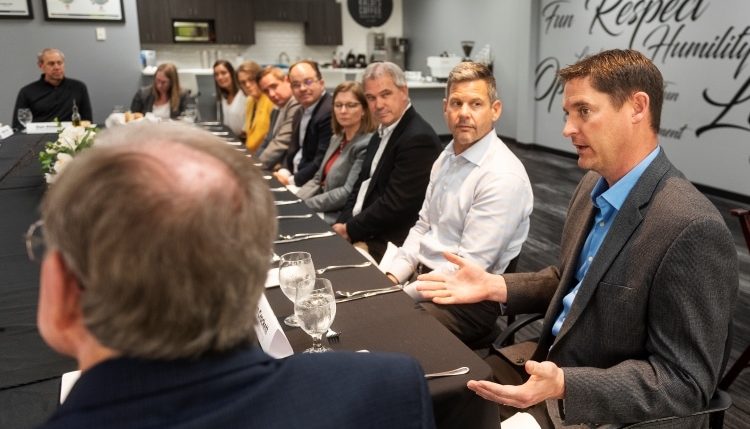Construction activity traditionally swings into high gear each spring, as freezing temperatures ease up and the ground thaws. So, it’s a great time to check in with Columbia builders and developers about the state of the local industry.
In May, Inside Columbia Publisher Fred Parry hosted a CEO Roundtable at Zimmer Radio and Marketing Group with 14 leaders from local construction, development, architectural, engineering and insurance companies. TIG Advisors co-sponsored the event with the Broadway Hotel. The hotel’s award-winning chef Jeff Guinn catered the meal that accompanied the conversation. Zimmer Strategic Media President Don Zimmer and General Manager Carla Leible also sat in on the conversation.
While many of the participants are competitors, Parry started the discussion by recognizing the importance of working together and communicating about trends and challenges to help everyone meet their common goals.
“We like to say iron sharpens iron,” Rich Miller says, a partner at TIG Advisors, formerly known as The Insurance Group. “Businesses are sharpening businesses — so to come together in a forum like this is great.”
–Jerry Daugherty, Reinhardt Construction
National construction data from 2018 showed $808 billion in construction starts, about a 3 percent increase over 2017, and predict similar numbers for 2019. That represents a deceleration from the previous three years, according to the Dodge Construction Outlook report. Challenges in 2018-2019 include higher mortgage rates and material costs and cuts to tax advantages for homeowners.
The CEO Roundtable group echoed many of the overall trends, including rising costs, labor and regulatory challenges, and technology advancements.
In a pre-event survey, participants characterized the current local business climate as healthy but inconsistent and cautious, noting activity has slowed in 2018 and the first half of 2019. In light of the decrease and some concern about the possibility of another recession, some shared a strong sense of caution around making big decisions. They also consistently cited concerns about rising costs and a labor shortage in the area — but some have a positive outlook and see opportunity and room for growth in the current market.
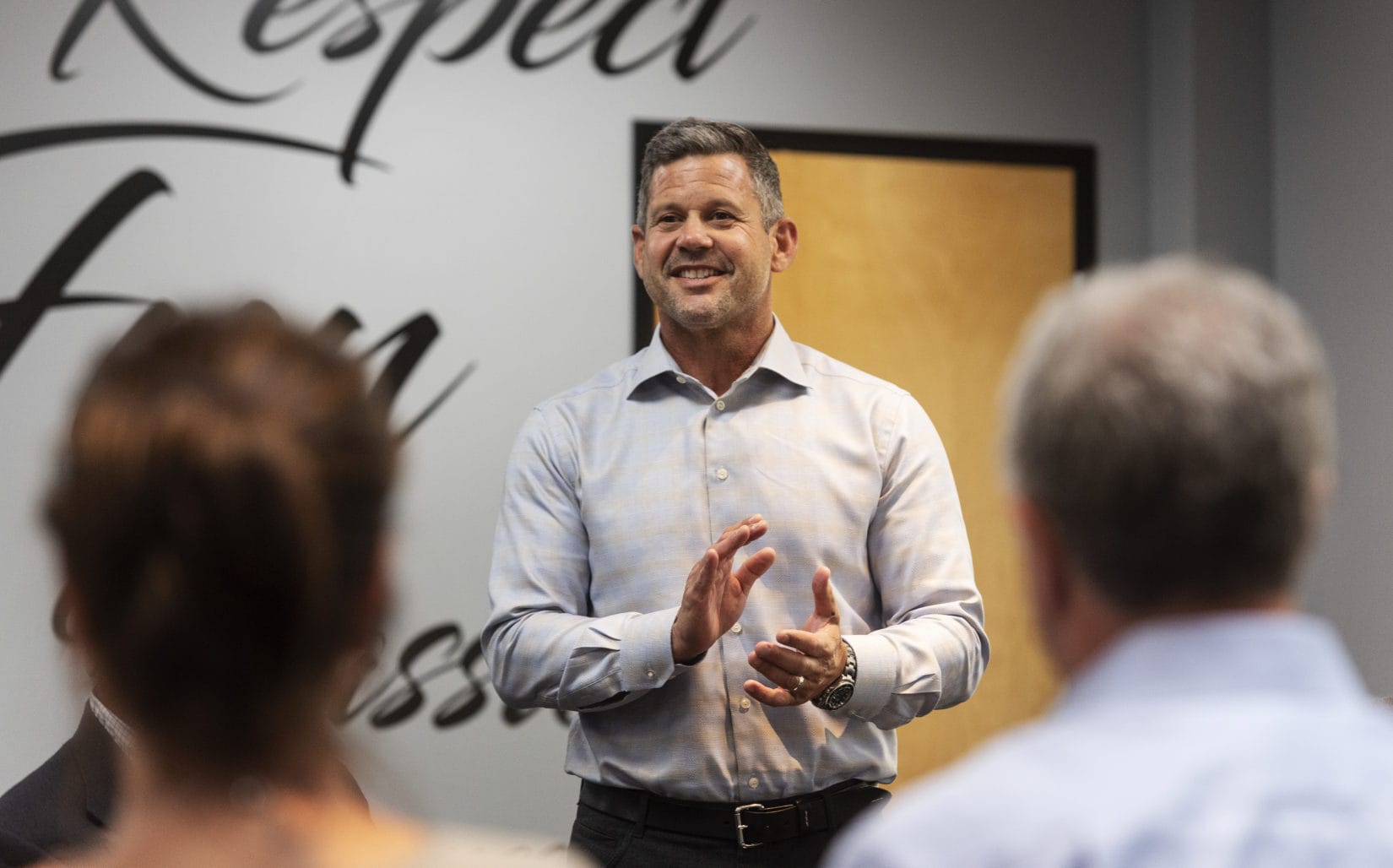
“I think it’s still doing well,” Randy Coil says, president and CEO of Coil Construction. “We did have a surge after the recession in 2008-2009, and while there were some markets that grew pretty strongly, others still are not going to recover. The bricks and mortar on retail is going to remain slow, and it’s been slow and it’s going to continue that way. But there are other parts of the market that have done well in Columbia.”
The demographics of a college town contribute to the dynamics and trends.
“With the enrollment decline, there has been some concern in the retail areas and restaurants, but healthcare is still very strong,” he says. “Businesses that have anything to do with e-commerce are also strong. So maybe it’s flattened a little bit, but I really haven’t seen it decline in the recent two or three years.”
Jerry Daugherty, president of Reinhardt Construction, says Columbia has a lot to offer any future developer or business interested in coming to Columbia.
“What’s Columbia got? Great medical. Great insurance companies. Shopping areas,” he says. “Columbia is a great town, and I think a lot of people know that and we need to convey that.”
Fortune tellers
With their fingers on the pulse of the local economy, construction and development leaders often get an early sense of trends. Parry asked what they see coming down the pipeline in the next two to three years.
Jay Gebhardt started A Civil Group in 2000, offering civil engineering and surveying services. This year they haven’t seen the usual amount of work coming in the door — and when it does, the sticker shock of higher costs is an issue.
“A lot of the work that does come in fails to mature into a project because of the costs,” he says. “The rents that people can get for a commercial building won’t sustain the cost to build it.”
Allstate Consultants has been offering civil engineering services in mid-Missouri since 1975, and Vice President Chad Sayre said they’ve also seen costs deter potential projects in recent years.
“The public side of our work seems to be really growing,” he says. “But on the private side, people who have bought land — maybe they did a project six or eight years ago, 10 years ago, and then they buy this hunk of land and they think that was worth it.”
Once planning and design get underway, they hit the brakes. To offset the challenges of cost and labor shortages, it would help to have a strategy around what industries and businesses Columbia wants to attract, he explains.
“Where is it that says, ‘We need this industry?’” he says. “I think we should have a targeted industry analysis for our Boone County communities and assess their individual community assets and needs.”
Recession lessons
Several participants mentioned fears of another recession on the horizon, with memories of the last one in 2008-2009 still fresh in mind. Parry asked what lessons they took away from that experience and how it’s shaping the way they conduct business in today’s climate.
“That means when we are really busy, we are cranking and pushing and working overtime,” she says.
Trabue talked about the shortage of mid-level project managers in mid-Missouri, and heads nodded around the table in agreement. She believes the shortage stems from the layoffs during the 2008 recession, which discouraged college students from studying development-related fields and careers.
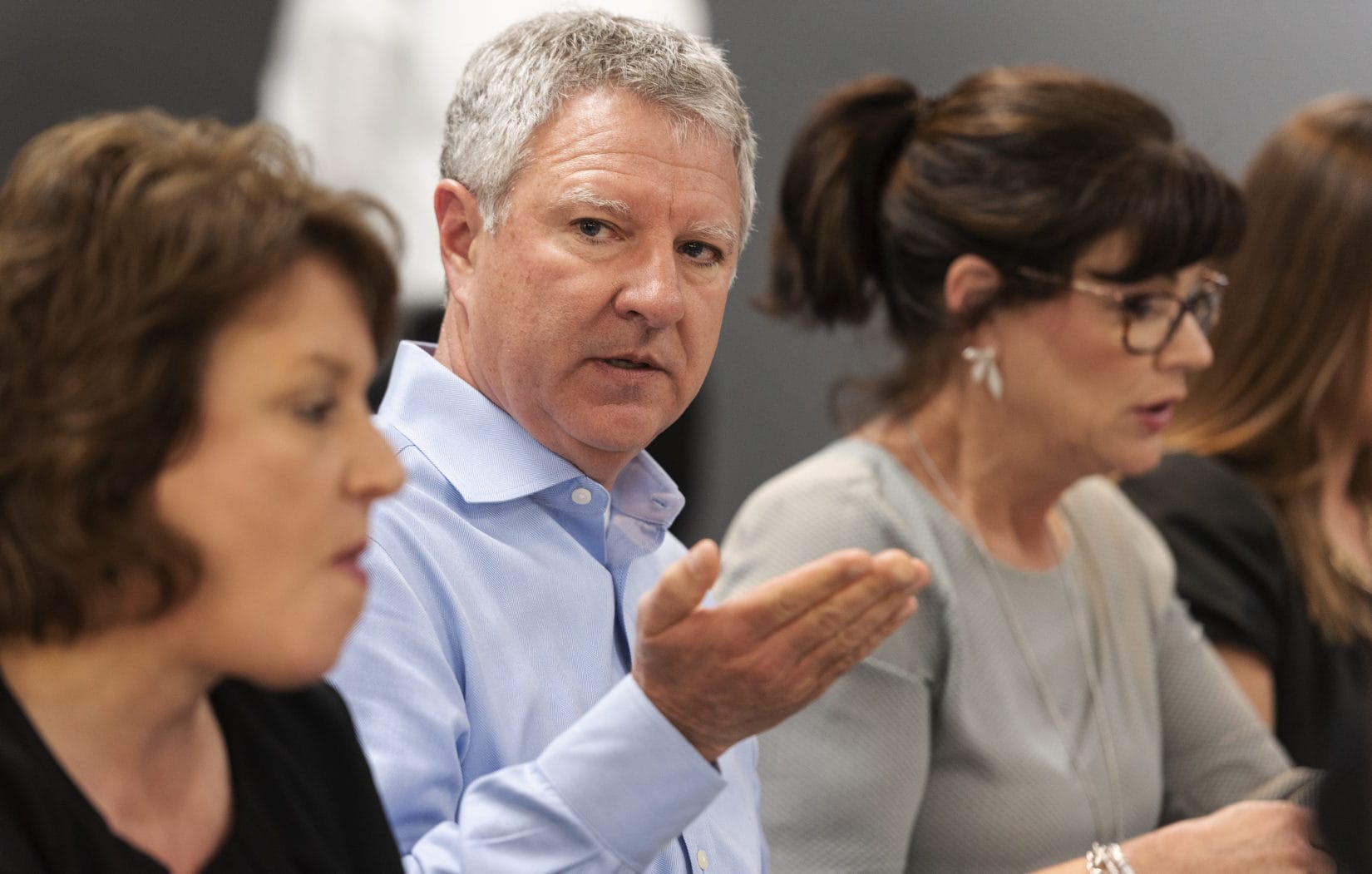
“The industry maintained senior people and there are talented up-and-coming people, but there is a big shortage in the middle because of that recession. It greatly affected our labor pool,” she says.
Some companies fared better through the last recession than others. Little Dixie Construction was able to keep its workforce and keep them busy, according to member John States.
“I think we were fortunate in 2008,” he says. “But now, the way that you look for projects has changed. We’ve got an extensive backlog of work currently, and we’re seeing more private [work] on our side,” as opposed to government projects other companies are seeing increase.
“I think it just depends on the niche you’re looking at and you’re going after,” he says.
At what cost?
No matter your niche, the issue of rising costs is a constant, says Mark Timberlake, president of Timberlake Engineering. They design heating, cooling, plumbing and electrical systems in commercial buildings.
“The cost has gone up, but the rents people are willing to pay have not yet gone up, so that’s really hurting us,” he explains. “I think that’s changing, but it’s slow.”
So, the question becomes not when will costs go back down, but when will investors and owners accept the new reality and start paying the higher costs — rather than avoiding or canceling projects.
“The cost aspect is, I think, the biggest challenge that we’re facing, the biggest headwind we have right now,” Timberlake says.
Costs are up in every major category, including materials, technology, labor and compliance requirements.
–Mark Timberlake, Timberlake Engineering
Tim Crockett, a partner at family-owned Crockett Engineering, says labor costs are a huge piece of the total picture.
“Everybody’s demanding a higher salary, a higher wage,” he says, citing the increase in the minimum wage. In Missouri, it’s adjusting annually from 2019 until it hits $12 per hour in 2023. “You used to have employees at double the previous minimum wage. Now they look at themselves as being paid minimum wage or what eventually will be minimum wage. So, your labor costs are going up. That’s going to affect everything.”
While some investors go headlong into projects before hitting the wall with costs, others are getting smarter about how they approach plans and investments.
“What we’re starting to see now is a much more educated owner about the construction industry,” says Andy Bonderer, CEO of Professional Contractors & Engineers (PCE). “They’ve done their background. They’re aware of the tariffs. They’re aware of the cement shortages. They’re much more educated about schedules and different aspects of projects and energy usages.”
Little Dixie Construction recently completed its own headquarters on LeMone Industrial Blvd., so States experienced the builder and owner sides simultaneously.
“The costs are incredible, and then you look at leasing the facility back,” he says. “How is this even going to be affordable?”
A tale of two cities
The conversation turned to another challenge many of the participants say they’re facing: a city that wants to grow and evolve but isn’t necessarily welcoming to development.
One sticking point for many around the table is the City’s Unified Development Code (UDC), an ordinance adopted by the city in 2017 that regulates land use, zoning, site development and subdivisions.
It’s safe to say it’s complicated: “Four hundred fifty-eight pages and footnotes,” Hart says.
The UDC represents three years of work the city undertook to overhaul the existing zoning regulations and was the subject of numerous public hearings, work sessions and discussions at City Council meetings.
Two years in, developers are feeling the effects.
“We have a lot of unexpected costs that pop up because of the UDC,” Gebhardt says. “Street trees, for example. It seems kind of innocuous you have to have a tree every 40 feet, but if you’re doing a subdivision with 132 homes and you have to plant 700-and-something trees, it’s starting to impact the costs of those lots.”
–John States, Little Dixie Construction
The code is cumbersome, but Crockett says the city does make effort to help developers interpret it.
“I think the city’s really agreeable to helping us understand the UDC,” Crockett says. “Once we get past that, though, I think the temperament of our city is much different than in other communities.”
Crockett Engineering does a lot of work in other cities and states. Development is difficult in those communities for some of the same challenges here — like regulatory and compliance issues — but he has found them to be more welcoming than Columbia.
Susan Hart is vice president of Huebert Builders, a commercial construction and remodeling company operating in Columbia since 1986. She said developers have to invest a lot of up-front costs to even assess whether a development is feasible, which means a lot of money and risk are already tied up in a project before the city gets involved. So, facing a lot of regulatory and judgment challenges is expensive and adds to overall costs.
Kerri Roberts from TIG Advisors says that amid the challenges, they’re focusing on building their company and their brand. “I think that if we would all focus on that versus waiting on consensus from the city, we would change the way our city looks,” she says.
On trend
One way the cost challenge is playing out: an increase in renovation projects rather than new developments. That’s been a good thing for builders in the remodeling space, according to Hart.
“I see a lot of people looking at a building, thinking about buying it because the development costs are too much” for a new build, she says. “So, they’re finding it much more affordable to go and buy an existing building and renovate it.”
She said some new projects even get as far as owners buying land, making development plans and then realizing they can’t rent out the property for what they need to cover costs.
–Susan Hart, Huebert Builders
Another trend on the group’s radar is medical marijuana. In 2018 Missouri voters approved Amendment 2, which allows state-licensed physicians to recommend marijuana for medical reasons and growers and individuals to cultivate it for that purpose. Sales are expected to start in early 2020.
The law includes provisions about dispensaries and other related facilities, but local municipalities still have some interpreting work to do.
“Boone County handled it very well,” Gebhardt says. “They’re treating it like a pharmacy. If you want to grow it in a grow house, it’s an agricultural use. You can do it in any ag zoning. So, a very good, simple way to deal with it.”
Parry asks the group if Columbia and Boone County will be able to accommodate the demand for medical marijuana-related facilities.
“People are now saying Columbia’s not going to be very friendly to this new industry,” Hart says. “They’re going elsewhere because, for instance, Springfield and Greene County modified their amendment and they’re treating it like a pharmacy. So [facilities can be within] 250 feet within a school or a church” rather than the 1,000 feet required by the state.
Energy conservation
There’s an added layer to all the planning, costs and decisions made around projects today: energy conservation measures.
“We’re becoming a climate change-centric type of government,” Randy Coil says.
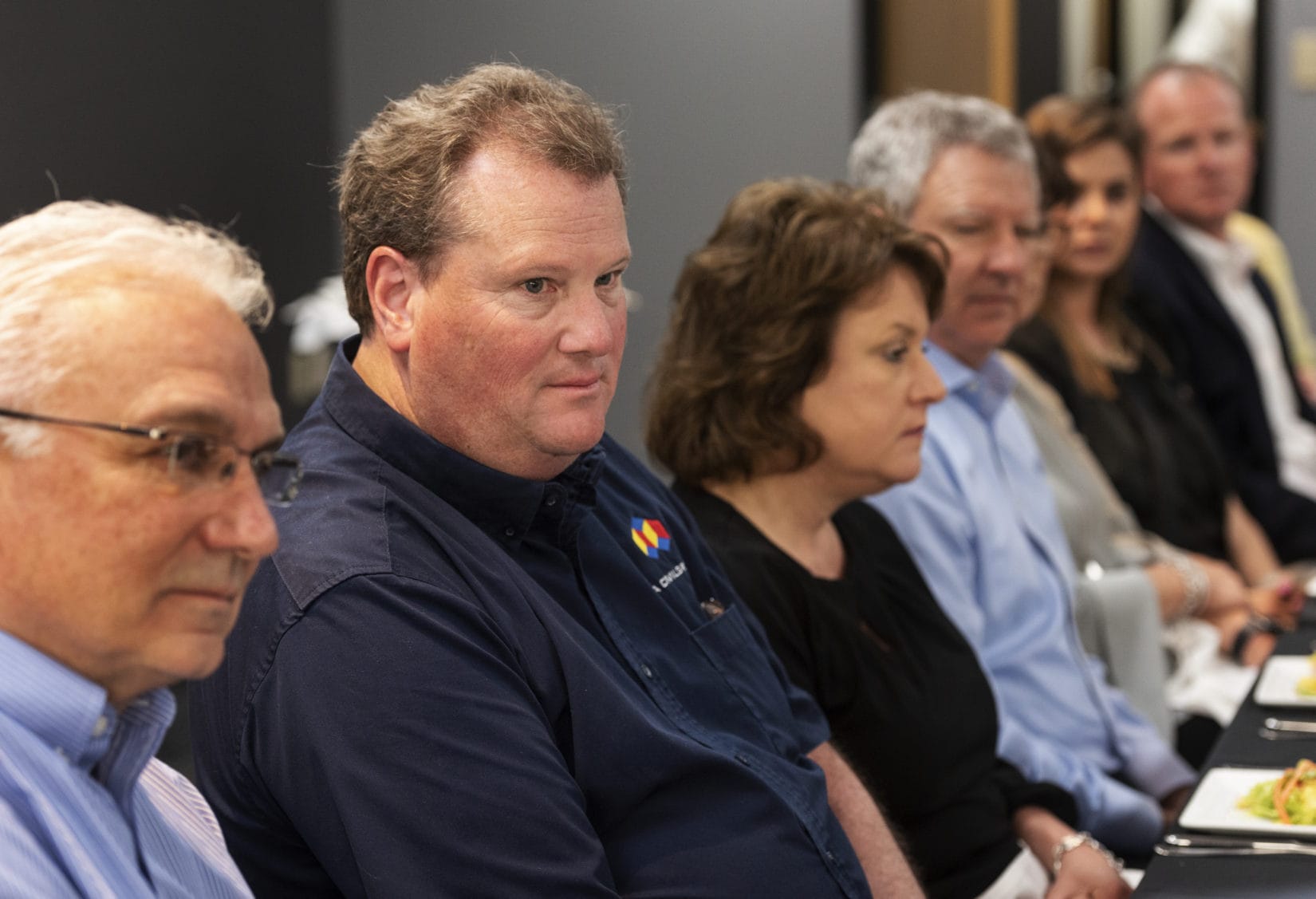
That means federal mandates, changes to local code ordinances and other regulatory changes.
“Whether it’s the addition of solar panels, wind or geothermal, it’s going to be more and more mandated across a variety of towns,” he says. “It’s already started, and I see that as probably one of the biggest changes in our industry in the next few years.”
Timberlake says the latest energy code includes an aggressive approach to energy conservation through solar panels, low-wattage lighting, software-controlled lighting systems, more efficient HVAC systems, renewable energy sources and more.
“You can’t generate that much electricity with solar panels as far as per square foot, so it’s going to take some radical reductions in energy use to make that happen,” he says.
Rising costs came up once again: “We’ve seen the cost of lighting in buildings pretty much double,” Timberlake says.
–Jen Hedrick, SOA
Tony Grove started Grove Construction in 2009, offering project development, general contracting, and design-build services. He said the energy regulations are difficult to explain to owners and added costs often aren’t factored into appraisals.
“Your appraiser isn’t going to take that into account, and if he doesn’t, the bank’s not,” he says. “It’s global in theory, but there has to be a better or stronger correlation between, you know, if construction goes up 20 percent, then let’s make the appraisals go up 20 percent.”
“And tenants aren’t going to pay more rent, necessarily,” Timberlake adds. “They should because they [pay] the utility bill, but you cannot sell that to them.”
The more energy-efficient approach does have benefits. “LED lighting fixtures are an amazing improvement that has been made in the building industry,” Timberlake says. “They use less than half of the electricity and now they’re costing down to the same as what the old fixtures were.” It’s the high-tech lighting control systems that add cost.
Energy conservation requirements can be especially challenging on renovations, Hart says.
“You take an old building like Tenth and Walnut and we were going to have to put the new energy code in place,” she says of renovations on the old Parker Funeral Home location. “They started to relax that a little bit because they realized I’m not going to dig out the foundation and put insulation board on a 1920 building. There were just things we couldn’t do.”
Jen Hedrick, president of SOA (also known as Simon Oswald Architecture), agrees.
“Somebody might purchase a building or be considering purchase of a building, and they look around and say it’s almost move-in ready,” she says. “You know, with a few floor plan changes and a little paint, and new flooring. And then all of a sudden, it’s a Change of Use and you’re talking with the city about the energy code and about required modifications to exterior walls, exterior windows, exterior roofs, and then … forget it. It’s just not affordable or cost effective.”
All politics are local
Everyone around the table expressed some level of frustration with the city, either regulations, cooperation or representation.
And while they might want things to be different, it seems the citizens don’t — or don’t feel personally impacted by the regulations.
Trabue says the community might be the key.
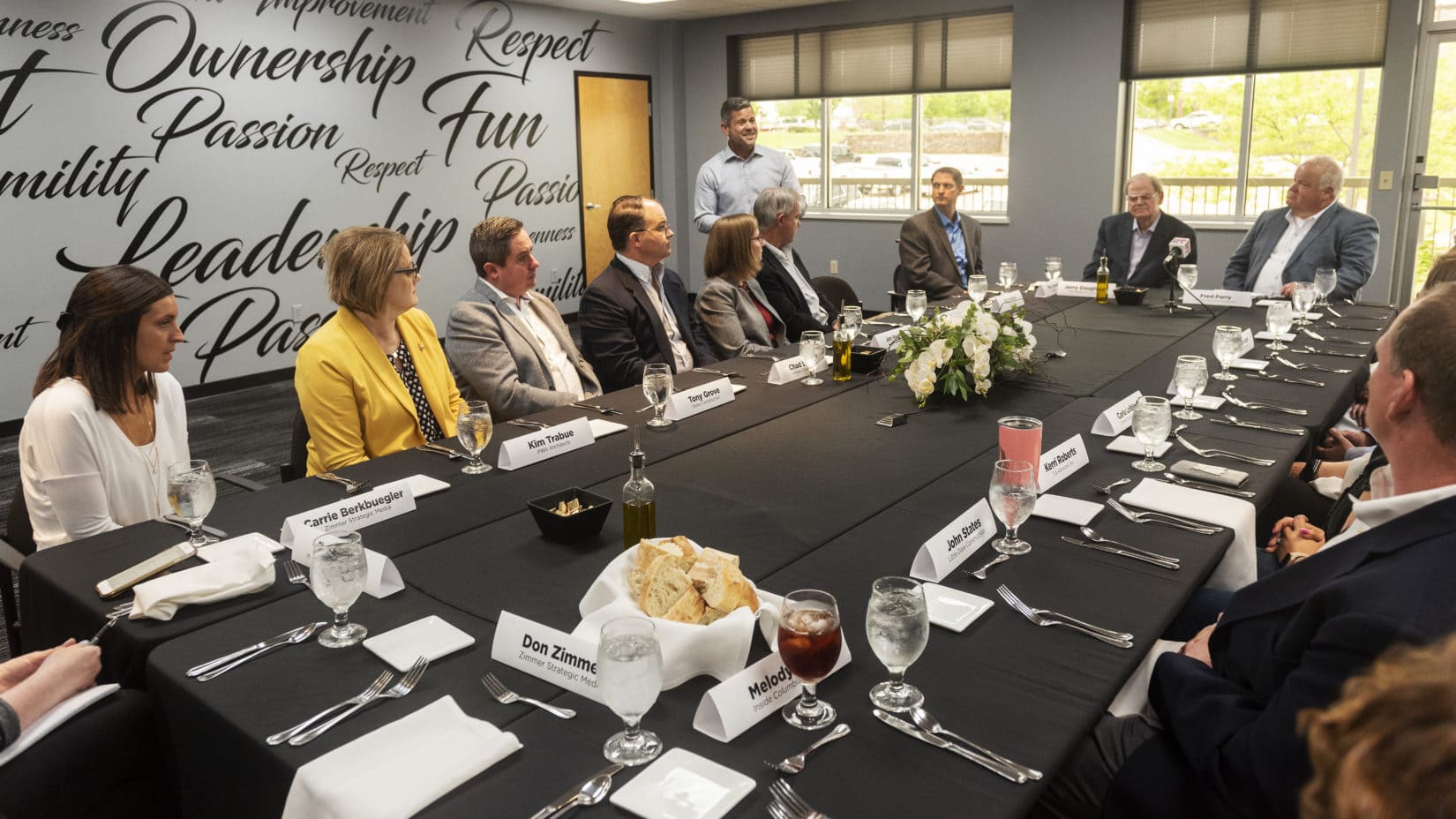
“Maybe we have to shift gears a little bit and think more about educating our citizenship, not just our city council,” she says.
Hedrick also believes a grassroots effort toward community education is a missing link.
“I think people just don’t understand or appreciate all that goes into development of property,” she says. “It’s not that people are against affordable housing or development, so much as they hear all the rhetoric and really don’t know how to discern what all of that means.”
Gebhardt said the challenges with the city could mean more residential development focused outside city lines, in cheaper areas to build like Boonville and Ashland.
“If we can show them that, wow, we’ve got competition, then I think things might start to change a little bit,” he says.
Stormy weather
Stormwater and sewer systems are one factor that determines the capacity for development in a given area.
“As Tim [Crockett] and anyone who works in the south part of town knows, there is no sewer left,” Gebhardt says. “There is no capacity. You can’t get in the Cascades Pump Station and you can’t get in the Route K Pump Station because they’re full.”
–Randy Coil, Coil Construction
That means there is no development that isn’t already planned in the south part of town, he says. “And the thing about that is growth’s going to happen, and whether it’s in the county or in the city is really dependent on the sewer.”
If a client is looking at land next to the city and he’s going to have to annex, Gebhardt says he tells him to “go a half-mile down the road and find a piece of ground. It’s going to be a lot simpler and a lot less expensive.”
Workforce challenges
Getting back to the topic of labor, Parry talks about partnerships between colleges and businesses, designed to get more young people interested in trades. Is there a way to get more people in the labor pipeline — especially in a town built on the four-year college concept?
Bonderer talks about work Hart and he are doing with the Columbia Career Center, which is part of Columbia Public Schools, to show students what jobs in the construction industry look like.
“We’ve done a poor job of marketing our industry for years,” Coil says. “Now we’re out here with drones and we can figure all sorts of topography and what’s under the soil, and we can do virtual realities with things now, and design work.”
–Tony Grove, Grove Construction
Through the Columbia Chamber of Commerce, Hart is involved in a program — modeled after one in Portland, Oregon — bringing school guidance counselors out for day-long experiences learning about jobs in commercial construction.
There are a lot of upsides to working in the industry: Today’s construction and development jobs carry vacation pay, healthcare and retirement benefits, and good pay, Coil says.
“Because of the shortage of labor,” Bonderer says, “construction workers are now part of the salary negotiations.”
Coil says another factor is an aging workforce and loss of the multi-generation effect.
“I’ve been at Huebert Builders 30 years,” Hart says, “and 30 years ago we had multigenerational families working together. That just doesn’t happen anymore, so I think we have to work on talking to our friends and our circles of influence about the good careers in construction.”
Grove, who has a degree in construction management from University of Central Missouri, says education in construction is important for people to understand how the industry has changed and what it has to offer.
“You don’t just swing a hammer anymore,” he says. “The technologies and everything involved in today’s construction, especially commercial construction, it’s not the same as it used to be. It is a career now. It’s not a job.”

